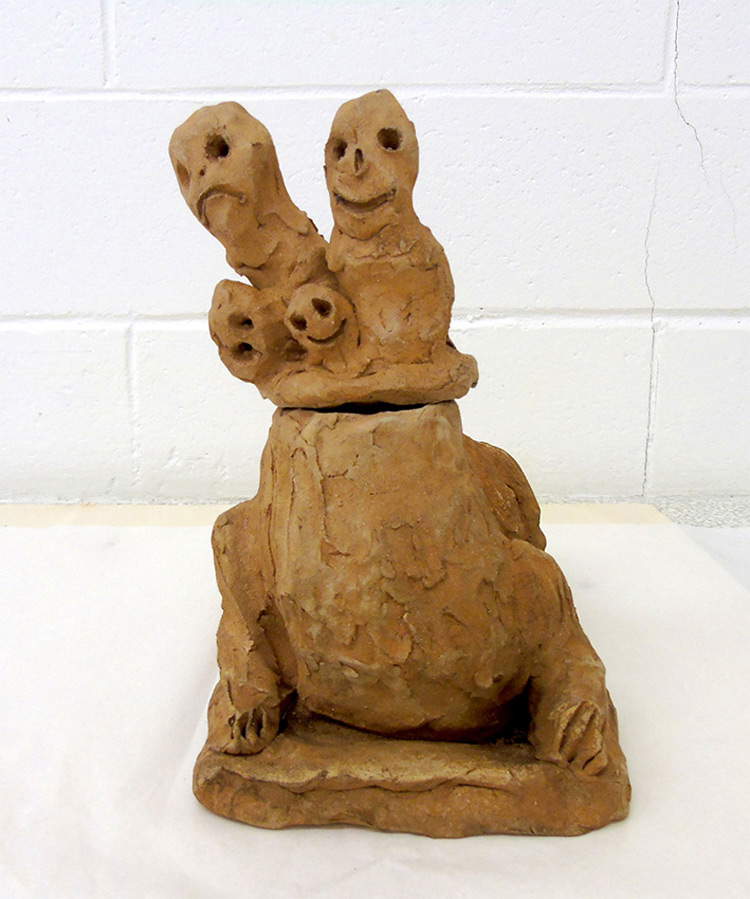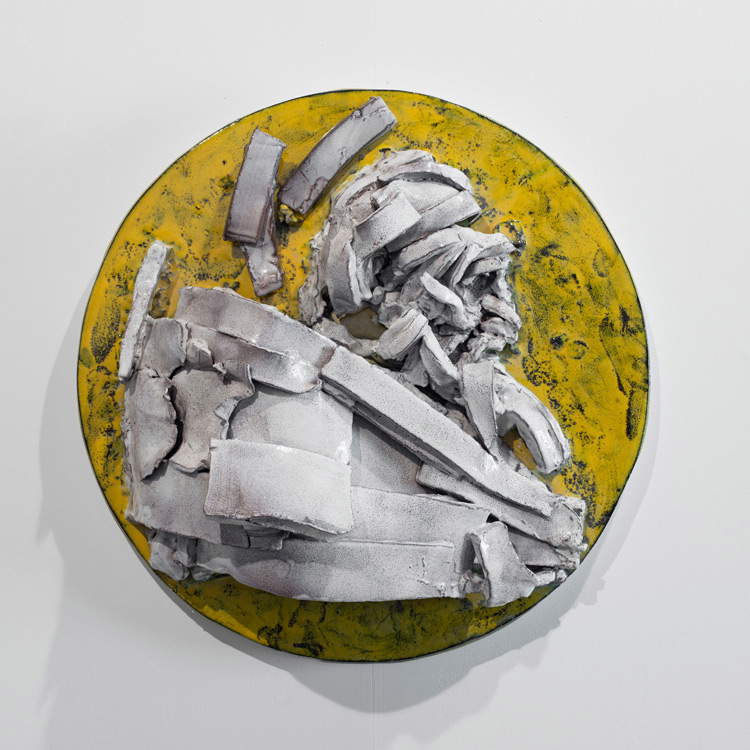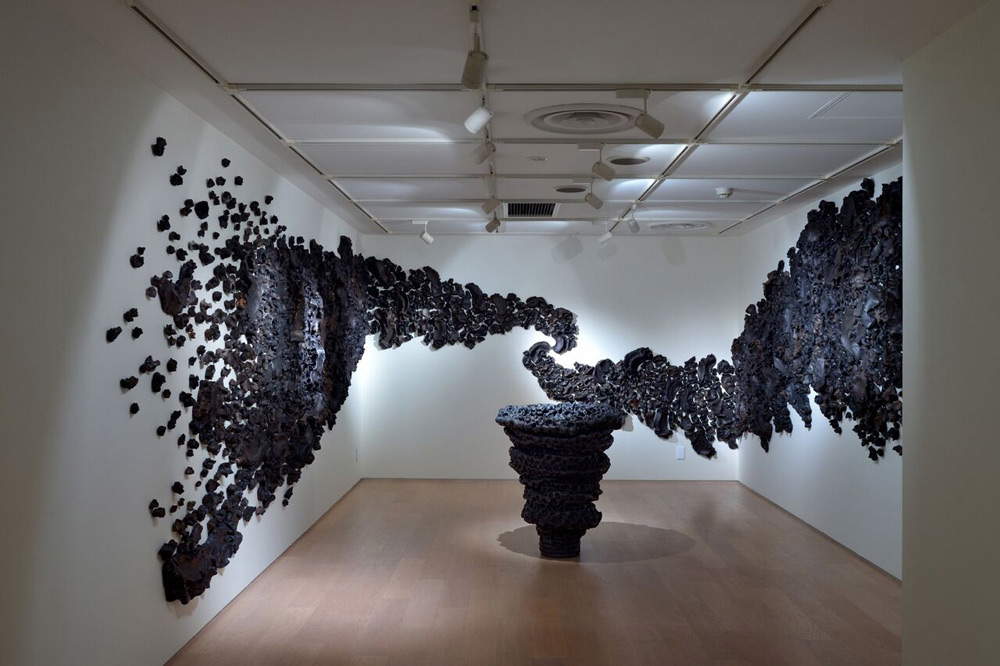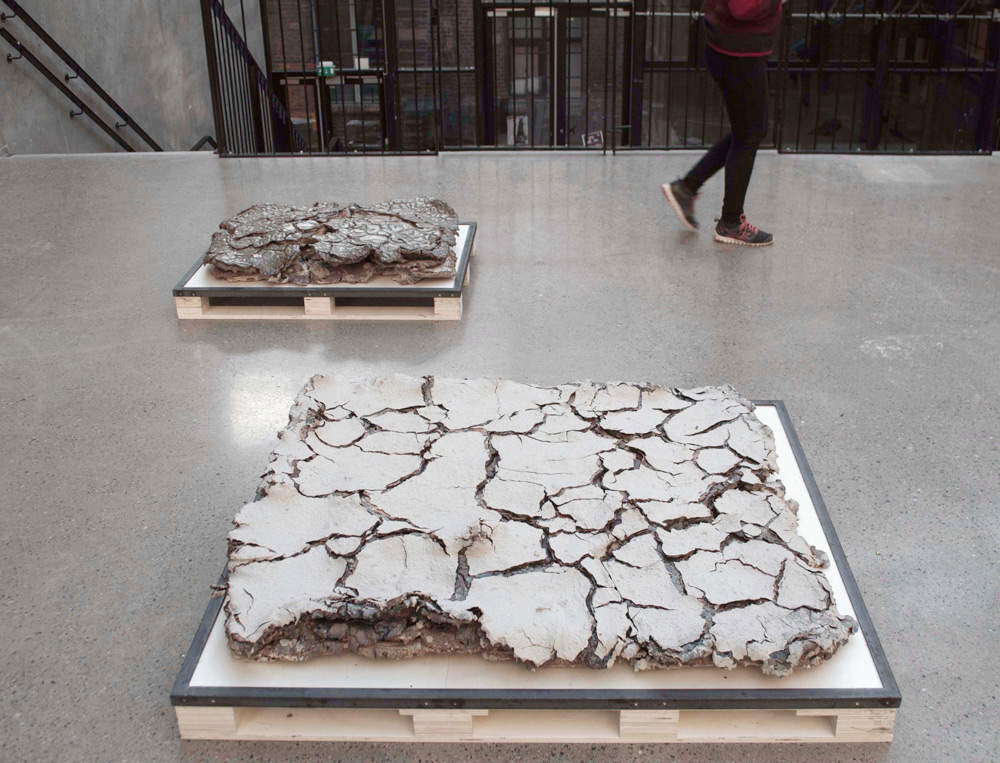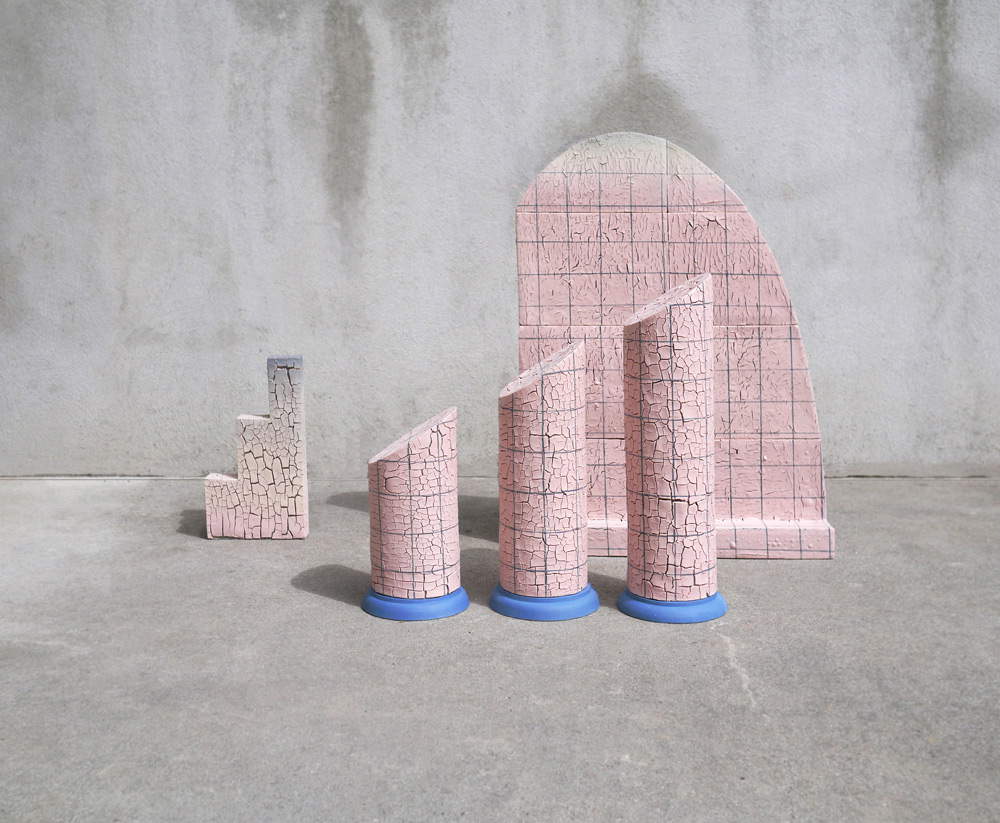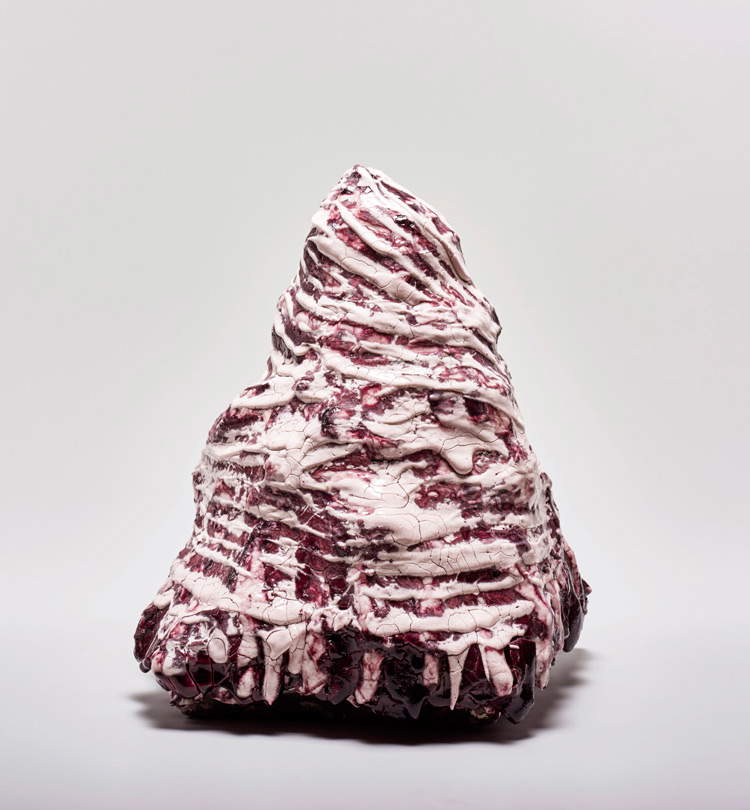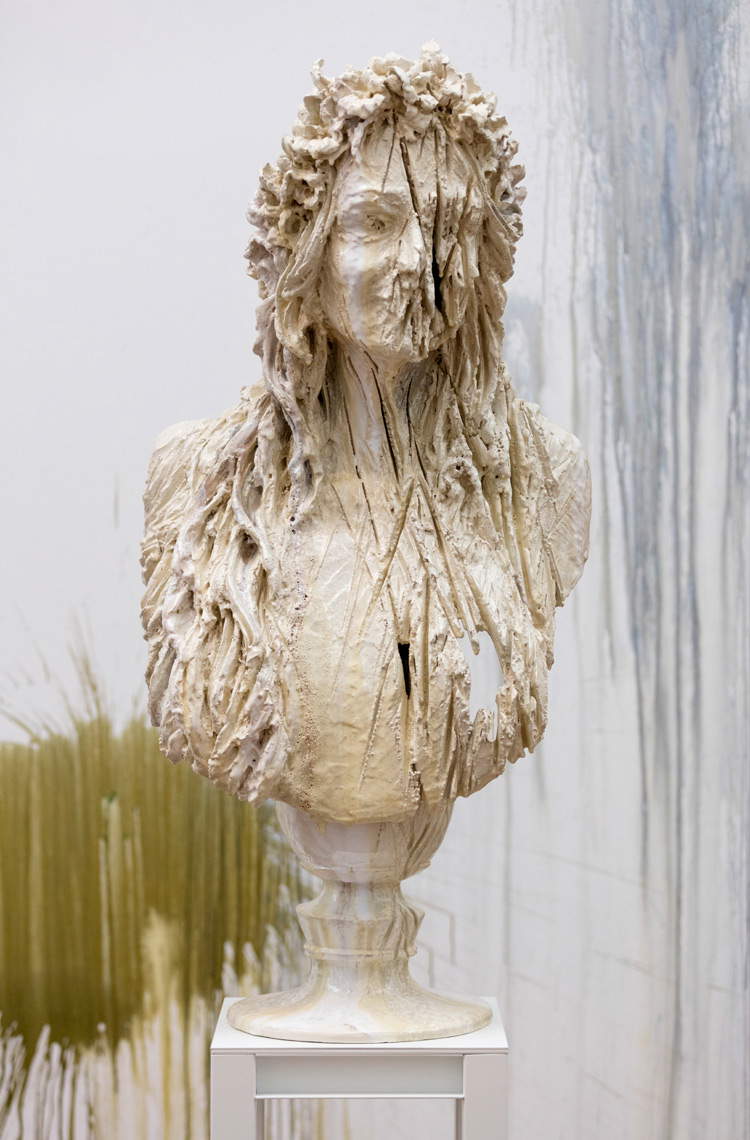by Redazione , published on 29/06/2018
Categories: Exhibitions
/ Disclaimer
From June 30 to September 7, 2018, the International Ceramics Museum in Faenza is hosting 'Ceramics Now,' a major exhibition featuring international ceramic greats.
On view at the Museo Internazionale della Ceramica (MIC) in Faenza from June 30 to October 7, 2018, is Ceramics Now, a major exhibition of the greats of contemporary world ceramics. Fifty-three artists from around the world (from China to the United States, India to Japan, Nigeria to Europe) chosen by 17 curators, also chosen from among leading international ceramic experts. The aim of the exhibition is to present the best of current research in the field of ceramic sculpture and investigate the perspectives of contemporary ceramics. The exhibition also aims to celebrate the sixty editions of the Faenza Prize, the longest-running international contemporary art ceramics competition in the world (and in which, in the past, artists such as Lucio Fontana, Fausto Melotti, Mario Ceroli, Eduard Chapallaz, and Sueharu Fukami have participated).
The works chosen for Ceramics Now offer the public a heterogeneous panorama: artists who started out as ceramists, but also authors who work not only on ceramics, mixing different languages to the point of encroaching oninstallation and performance. “There is a lot of attention around the world to ceramics,” comments Claudia Casali, director of the MIC in Faenza. “The many international events staged in recent years (I’m thinking of the Venice Biennale, the Henan Biennial, the Icheon Biennial in Korea, exhibitions like Ideal land of Ceramics in Beijing, the choices of many influential galleries that are world leaders in the contemporary art system, and presences in major international art fairs) are providing a literature on the valuations and opportunities of ceramics today. It is up to us curators, museum directors, practitioners, and it is up to the artists to steer the sails and stay the course to reach the white shores of authoritative considerations and meaningful projects. If ever there is still a need. Let us not, however, fall into the easy mistake of ’ghettoizing’ this language: let us have the strength to build projects in synergy between languages under the banner of contemporaneity, because as Master Fukami said in a recent interview, it is our task to keep the rudder steady against the strong winds that blow over ceramics.”
The seventeen curators are Sandra Benadretti, Luca Bochicchio, Irene Biolchini, Claudia Casali, Monika Gass, Wendy Geers, Grant Gibson, Tomo Hirai, Jacques Kaufmann, Torbjorn Kvasbo, Alessandra Laitempergher, Elaine Olafson Henry, Jelena Popovic, Urmas Puhkan, Vittorio Amedeo Sacco, Nathalie Shu Ling Chiang, and Marco Tonelli.
“There are many ways to approach ceramics today,” argues Jelena Popovic. “With its long history, the ceramic medium has been used in different ways-from creating relatively simple utilitarian objects to being an important medium for contemporary art. Ceramic artists have changed their area of action from practical and functional visual art to creative art. Aware of their role, contemporary artists use clay to express emotions and values, showing their responsibilities, culture and identity.” For Sandra Diana Benedetti, “contemporary ceramics today is characterized by two main axes that are not mutually exclusive. The first aims to explore and develop the technical possibilities of materials. It produces unpredictable and surprising works through the original creation process, the result of random interactions of fire, air and water on earth. Demands, meticulousness and wisdom combine in a quest for perfection. The second reflects today’s social issues of artists, who are often sculptors and no longer ceramic specialists as they once were. In this sense, ceramics becomes a conceptual mode of expression that combines various techniques and no longer has to justify its functional nature. Both directions are viable, however, my training and personal tastes make me particularly appreciate the quality of materials research.”
“In the age of speed beyond reasonable doubt, of the instant that burns thought (not to mention reflection, this unknown!),” Luca Bochicchio emphasizes instead, “ceramics is to the artist as nature is to man: it imposes a timing and an expectation. It is therefore today, at the very least, revolutionary.” Elaine Olafson Henry emphasizes the value of Ceramics Now: “Inclusion is the most important aspect of an exhibition like this and I encourage the organizers in continuing to work to become more and more open to all.” Monica Gass, on the other hand, outlines the future of art, and of ceramics: “Whether we like it or not, in the very near future, works with social-political messages will dominate the scene without respecting our love of beauty: they provoke our strongest emotions, stress curators, take visitor acceptance to the limit, lead us to controversial debates and decisions in juries... but this is, from the creation of the first work of art, the artistic language as a means of expression. However, we should not be reluctant: we should embrace this language, we should be emotionally and professionally prepared for it all! Beauty can still be sought in many ceramic works, our senses long to be lost in meditation, in the enjoyment of graceful and peaceful works, but modern ceramics 2018 is vibrant and always looking for improvement.”
Below is the list of artists with their respective birth years: Eugenj Antufiev, 1986 (RUS); Salvatore Arancio, 1974 (ITA/GBR); Neil Brownsword, 1970 (GBR); Bertozzi & Casoni 1957-1961 (ITA); Arianna Carossa, 1973 (ITA/USA); Fernando Casasempere, 1958 (CHI/GBR); Bruno Ceccobelli, 1952 (ITA); Caroline Cheng, 1963 (CHN); Chang Ching Yuan, 1960 (TAW); Salvatore Cuschera, 1958 (ITA/GBR); Canan Dagdelen, 1960 (TUR/AUT); Giuseppe Ducrot, 1966 (ITA); Clementine Dupré, 1978 (FRA); Efrat Eyal, 1967 (ISR); Alessandro Gallo, 1974 (ITA/USA); Mia E Göransson, 1961 (SWE); Michel Gouery, 1959 (FRA); Chen Guanghui, 1969 (CHN); Satoru Hoshino, 1945 (JAP); Thomas Hirschler, 1965 (GER); Tsubasa Kato, 1962 (JAP); Sangwoo Kim, 1980 (KOR/FRA); Katrine Køster Holst, 1979 (DEN); Anna Dorothea Klug, 1984 (GER); Liu Jianhua, 1962 (CHN); Luigi Mainolfi, 1948 (ITA); Shozo Michikawa, 1953 (JAP); Johannes Nagel, 1979 (GER); Harumi Nakashima, 1950 (JAP); Ngozi Omeje Ezema, 1979 (NIG); Pekka Paikkari, 1960 (FIN); Eva Pelechová, 1984 (CZE); Alessandro Pessoli, 1963 (ITA/USA); Paolo Polloniato, 1979 (ITA); Irina Razumovskaya, 1990 (RUS); Leo Rohlin, 1939 (EST); Annabeth Rosen, 1957 (USA); Kathy Ruttenberg, 1957 (USA); Anders Herwald Ruhwald, 1974 (DEN/USA); Brendan Lee Satish Tang, 1975 (CAN); Scuotto (Salvatore 1969, Emanuele 1978 - ITA); Kim Simonsson, 1973 (FIN); Vera Stanković, 1967 (SLO/SRB); Sudarshan Shetty, 1961 (IND); Johan Tahon, 1965 (BEL); Alessio Tasca, 1929 (ITA); Johnson Tsang, 1960 (CHN); Antonio Violetta, 1953 (ITA); Jiang Yanze, 1975 (CHN); Yunghsu Hsu, 1955 (TAW); Anne Wenzel, 1972 (GER/NED); Paula Winokur, 1935-2018 (USA); Veljko Zejak, 1980 (SRB); Simon Jozsef Zsolt, 1978 (HUN).
The exhibition opens Tuesday through Sunday from 10 a.m. to 7 p.m. Closed Mondays (except holidays) and Aug. 15. Admission: full ticket 10 euros, reduced 7 euros, reduced student 3 euros. Ceramics Now is organized thanks to the support of Regione Emilia-Romagna, Fondazione Cassa di Risparmio di Ravenna, Fondazione Banca del Monte and Cassa di Risparmio Faenza, Cersaie, Hera and Caviro. Under the patronage of the Province of Ravenna, Municipality of Faenza, European Year of Cultural Heritage, AIC (International Academy of Ceramics), ICOM, 50th Premio Europa Faenza, ICMEA. For more information you can visit the Faenza MIC website. Following is a selection of images of works that will be seen in Faenza.
 |
| Chen Guanghui, Floating Rock (2017; stoneware, 50 x 65 x 70 cm) |
 |
| Evgenij Antufiev, Untitled (2017; ceramic, various sizes; Collezione Maramotti) |
 |
| Bertozzi & Casoni, Waiting (2013; polychrome ceramic, 210 cm diameter) |
 |
| Arianna Carossa, Dos Estrellas (2018; mixed media, ceramic and wood) |
 |
| Giuseppe Ducrot, Sixtus V (2014; glazed terracotta, diameter 75 cm) |
 |
| Thomas Hirschler, Fine it would be (2017-2018; ceramic, 60 x 60 cm) |
 |
| Satoru Hoshino, Beginnig form - Spiral ’18 (2018; stoneware and clay, 260 x 380 x 150 cm) |
 |
| Katrine Holst Koester, Studies of strata and crack formations, Slab #3 (2015-2018; 227 layers of ceramic materials, 136 x 150 cm) |
 |
| Johannes Nagel, Free Jazz (2017; stoneware, 80 x 85 cm each) |
 |
| Harumi Nakashima, A form disclosing absurdities (2015; clay, 84 x 43 x 52 cm) |
 |
| Irina Razumovskaya, Ruin (2018; porcelain, 100 x 100 x 60 cm) |
 |
| Annabeth Rosen, Rale (2015; ceramic, 31 x 33 x 36 cm) |
 |
Anne Wenzel, Under Construction(2018; ceramic, various sizes)
 |
| Veljko Zejak, Big money (2015; print on ceramic, Plexiglas, aluminum, silicone, LED lights, 196.5 x 83 x 5 cm) |
|
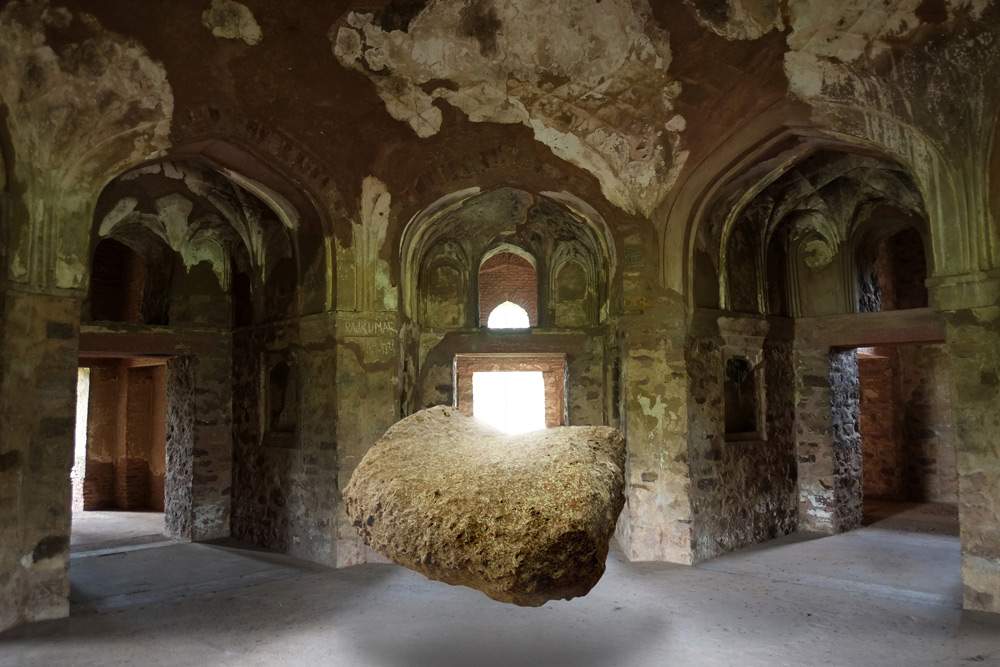 |
| Ceramics Now: the greats of world contemporary ceramics on display in Faenza. Photos |
Warning: the translation into English of the original Italian article was created using automatic tools.
We undertake to review all articles, but we do not guarantee the total absence of inaccuracies in the translation due to the program. You can
find the original by clicking on the ITA button. If you find any mistake,please contact us.

